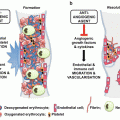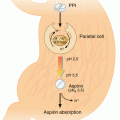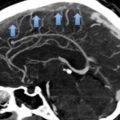Major risk factors
Prevalence
Inherited
Inherited antithrombin deficiency
3.9 %a
Inherited protein C deficiency
5.6 %a
Inherited protein S deficiency
2.6 %a
Factor V Leiden mutation
6 %–32 %b
Prothrombin G20210A mutation
14 %–40 %b
Acquired
Myeloproliferative neoplasms
31.5 %a
JAK2V617F mutation
24 %a
Paroxysmal nocturnal hemoglobinuria
0 %–2 %b
Behcet’s diseases
0 %–31 %b
Hyperhomocysteinemia
12 %–22 %b
MTHFR C677T gene mutation
11 %–50 %b
Antiphospholipid syndrome
6 %–19 %b
Inherited AT, PC, and PS deficiencies are the first causes of inherited thrombophilia in patients with venous thrombosis. However, the nature of AT, PC, and PS deficiencies is readily confused in patients with liver diseases, because PVT can result in the occurrence of liver dysfunction, thereby reducing the AT, PC, and PS concentrations. Qi et al. conducted a systematic review and meta-analysis regarding the prevalence of inherited AT, PC, and PS deficiencies in patients with portal vein system thrombosis (Qi et al. 2013a). Although the pooled prevalence of inherited AT, PC, and PS deficiencies were relatively low in patients with portal vein system thrombosis (3.9 %, 5.6 %, and 2.6 %, respectively), they were closely associated with an increased risk of portal vein system thrombosis. The pooled odds ratios (ORs) of inherited AT, PC, and PS deficiencies for portal vein system thrombosis were 8.89 (95 % confidence interval [CI]: 2.34-33.72, P = 0.0011), 17.63 (95 % CI: 1.97-158.21, P = 0.0032), and 8.00 (95 % CI: 1.61-39.86, P = 0.011), respectively.
FVL and prothrombin G20210A mutations are often considered as the two most common causes of hereditary thrombophilia in patients with venous thrombosis. Qi et al. conducted a systematic review and meta-analysis regarding the association between FVL and prothrombin G20210A mutations and PVT (Qi et al. 2014a). In non-cirrhotic patients, the presence of PVT was significantly associated with the FVL mutation (OR = 1.85; 95 %CI: 1.09-3.13) and prothrombin G20210A mutation (OR = 5.01; 95 %CI: 3.03-8.30).
Philadelphia-chromosome negative MPNs, which primarily include polycythemia vera (PV), essential thrombocythemia (ET), and myelofibrosis (MF), may be considered as the most frequent systemic etiological factors of PVT in non-cirrhotic patients. Smalberg et al. performed a meta-analysis regarding the prevalence of MPNs in patients with PVT (Smalberg et al. 2012). The mean prevalence of MPNs was 31.5 % (95 %CI: 25.1-38.8 %). In details, the mean prevalence of PV, ET, MF, and unclassifiable MPNs in such patients was 27.5 % (95 %CI: 19.0-38.1 %), 26.2 % (95 %CI: 19.1-34.8 %), 12.8 % (95 %CI: 8.0-19.9 %), and 17.7 % (95 %CI: 9.9 %-29.7 %), respectively. Indeed, it is often difficult to meet the traditional diagnostic criteria for MPNs (i.e., a significant change in the regular blood tests) in patients with chronic PVT, especially in those with portal hypertension-related bleeding and/or hypersplenism. The identification of JAK2 V617F mutation greatly simplifies the diagnostic strategy of MPNs. A meta-analysis demonstrated that the pooled prevalence of JAK2 V617F mutation in patients with PVT was 24 % (95 %CI: 15.5-33.3) (Smalberg et al. 2012). However, most of data included in this meta-analysis were from Western countries. Subsequently, an observational study also confirmed these findings in Chinese patients with PVT (Qi et al. 2012).
PNH is widely recognized as a major thrombotic risk factor for PVT. A systematic analysis reported that portal vein was one of the most common sites affected by PNH (Ziakas et al. 2007). However, several recent studies just identified a very low prevalence of PNH in patients with PVT (Qi et al. 2013b; Ageno et al. 2014; Ahluwalia et al. 2014). Thus, the role of routine screening for PNH in patients with PVT remains unclear.
Hyperhomocysteinemia is regarded as a major thrombotic risk factor for venous and arterial thrombosis. MTHFR C677T gene mutation is the most precipitating factor for the occurrence of hyperhomocysteinemia. However, in a meta-analysis, the prevalence of homozygous or heterozygous MTHFR mutation was not significantly different between non-cirrhotic patients with PVT and healthy controls (homozygous mutation: OR = 1.72, 95 %CI: 0.90-3.29, P = 0.10; heterozygous mutation: OR = 1.14, 95 %CI: 0.49-2.68, P = 0.76) (Qi et al. 2014b). Notably, a recent observational study demonstrated a very high prevalence of MTHFR C677T gene mutation in Chinese patients with non-cirrhotic PVT (76 %, 29/38) (Qi et al. 2015a). Thus, it might be worthwhile to further evaluate whether or not MTHFR C677T gene mutation contributed to the occurrence of PVT in Chinese patients. Until now, only one study compared the prevalence of hyperhomocysteinemia between non-cirrhotic PVT patients and healthy controls. A statistical significance was achieved (OR = 4.21, 95 %CI: 1.01-17.54, P = 0.05), but a small sample size limited the generalization of the conclusions.
Antiphospholipid syndrome is characterized by arterial and/or venous thrombosis, recurrent fetal loss, and thrombocytopenia in the presence of antiphospholipid antibodies. A systematic review with meta-analysis demonstrated that only positive immunoglobulin G anticardiolipin antibody was more frequently observed in non-cirrhotic patients with portal vein system thrombosis than in healthy controls (Qi et al. 2015b). However, other antiphospholipid antibodies, such as immunoglobulin M anticardiolipin antibody, lupus anticoagulants, anti-β2-glycoprotein-I antibody, and anti-β2-glycoprotein-I oxidized low-density lipoprotein antibody were not associated with portal vein system thrombosis in non-cirrhotic patients. Thus, only immunoglobulin G anticardiolipin antibody should be recommended.
In the setting of liver cirrhosis, the development of PVT is more closely associated with a decreased portal flow caused by the liver architectural derangement. Recently, a prospective study confirmed that a reduced portal flow velocity was the most important predictive variable for the development of PVT in patients with cirrhosis (Zocco et al. 2009). In this study, a portal flow velocity of < 15 cm/s was identified as the cut-off value for the development of PVT. Its sensitivity and specificity was 85.7 % and 78.0 %, respectively. Furthermore, the presence of systemic thrombotic risk factors and the changes of the coagulation and anticoagulation factors might be associated with the development of PVT in liver cirrhosis. However, a meta-analysis found that reduced AT, PC, and PS concentrations were not associated with the development of PVT in such patients (Qi et al. 2013c). Indeed, the reduction should be explained by the occurrence of liver dysfunction. In the patients with hepatocellular carcinoma, tumor invasion accounts for the development of PVT.
4 Prevention
Ideally, the prevention of PVT should include the two major considerations: (1) eradication of predisposing factors; and (2) use of anticoagulants in high-risk patients. As for the PVT in patients with liver cirrhosis, the portal flow velocity should be accelerated. As for the PVT in patients without liver cirrhosis, the acquired or inherited thrombotic risk factors should be corrected.
In patients with definite thrombotic risk factors and without PVT, the use of anticoagulants may be a promising choice for the prevention of PVT. Their potential safety and limited efficacy should be fully balanced. A recent randomized controlled trial by Villa et al. demonstrated that the enoxaparin (4000 IU/day, subcutaneously for 48 weeks) could significantly decrease the incidence of de novo PVT in patients with liver cirrhosis without hepatocellular carcinoma (Villa et al. 2012). The incidence of PVT at 48 weeks was significantly different between the enoxaparin and no treatment groups (0/34 versus 6/36, P = 0.025). Notably, the investigators did not record any relevant side effects or hemorrhagic events. Furthermore, the hepatic decompensation events and mortality were significantly decreased. The impressive findings inspired us to explore the prophylactic anticoagulation in cirrhotic patients.
A meta-analysis also evaluated the prophylactic measures for decreasing the incidence of PVT after splenectomy (Qi et al. 2014c). Overall analysis demonstrated that the incidence of PVT after splenectomy was significantly reduced by the preventive measures (OR = 0.33, 95 %CI: 0.22-0.47, P < 0.00001). The risk of bleeding was not significantly increased by the preventive measures (OR = 0.65, 95 %CI: 0.10-4.04, P = 0.64). However, it should be noticed that the number of included studies is relatively low and the quality is relatively poor.
5 Treatment
Currently, there are lots of treatment modalities for PVT. However, no consensus is clearly provided about the indications and contra-indications for various treatment modalities.
5.1 Anticoagulation in Non-Cirrhotic Patients with PVT
Anticoagulation is the most frequently used and readily available choice for therapy of PVT. Anticoagulation therapy significantly increased the rate of portal vein recanalization in patients with recent portal or mesenteric venous thrombosis. In a retrospective study by Condat et al., the rate of recanalization was 25/27 in patients who were treated with anticoagulation and 0/2 in patients who were not treated with anticoagulation (Condat et al. 2000). Additionally, anticoagulant therapy did not increase the risk or the severity of bleeding in non-malignant and non-cirrhotic patients. If anticoagulation therapy was lacking, the risk of thrombosis would be significantly increased (Condat et al. 2001). They also found that the incidence of splanchnic venous infarction was significantly decreased by anticoagulation therapy (0.82 versus 5.2 per 100 patient-years, P = 0.01). By comparison, Spaander et al. found that anticoagulation therapy was a significant predictor of (re)bleeding (hazard ratio [HR] = 2.0, P < 0.01) and did not significantly reduce the risk of recurrent thrombosis (HR = 0.2, P = 0.1) (Spaander et al. 2013).
Recently, a European multi-center prospective study found that the incidence of portal vein recanalization after early anticoagulation was 33 % in non-malignant and non-cirrhotic patients with acute PVT (Plessier et al. 2010). In this large study enrolling 95 patients with acute PVT receiving anticoagulation, the investigators also found that the presence of ascites (HR = 3.8, 95 %CI: 1.3-11.1) and an occluded splenic vein (HR = 3.5, 95 %CI: 1.4-8.9) predicted the failure to recanalize the portal vein. Maruyama et al. also suggested that intra-thrombus enhancement on the contrast-enhanced sonogram before anticoagulation was associated with the portal vein recanalization after anticoagulation (Maruyama et al. 2012). Collectively, these findings were helpful to guide the physicians to predict the outcome of anticoagulation and to provide an early decision of other aggressive treatment modalities.
More recently, Silva-Junior et al. reported that long-term anticoagulation successfully reconstructed the portal vein patency in a case with portal cavernoma (Silva-Junior et al. 2014). This case potentially supported the clinical utility of anticoagulation in chronic PVT.
5.2 Anticoagulation in Cirrhotic Patients With PVT
Experimental studies by using a global test of thrombin generation found a fragile re-established balance between thrombotic and bleeding tendency in liver cirrhosis. Even an increased ratio of factor VIII to protein C indicated the probability of developing thrombosis in liver cirrhosis (Tripodi et al. 2009). At present, the old dogma that liver cirrhosis has only a bleeding diathesis is being challenged, and the new perspective that anticoagulation therapy may be feasible for the treatment of thrombotic events in liver cirrhosis is gradually accepted (Tripodi and Mannucci 2011).
Several case series disclosed the efficacy and safety of anticoagulation therapy in recanalizing the thrombotic portal vein in liver cirrhosis (Amitrano et al. 2010; Delgado et al. 2012). A systematic review of observational studies reported a low incidence of major anticoagulation-related complications, but no lethal complications (Qi et al. 2015c). The rate of anticoagulation-related bleeding ranged from 0 to 18 % with a pooled rate of 3.3 % (95 %CI: 1.1-6.7 %). In addition, the pooled rate of portal vein recanalization was 66.6 % (95 %CI: 54.7-77.6 %), regardless of complete or partial recanalization. The pooled rate of complete portal vein recanalization 41.5 % (95 %CI: 29.2-54.5 %). Compared with non-anticoagulation group, the anticoagulation group achieved a significantly higher rate of complete portal vein recanalization (OR = 4.16, 95 %CI: 1.88-9.20, P = 0.0004). More recently, Chung et al. have conducted a propensity score matching analysis to compare the outcome of anticoagulation for the treatment of PVT in 14 patients who received warfarin and 14 patients who received no anticoagulation (Chung et al. 2014). In the warfarin treatment group, thrombus resolution was observed in 11 patients. By comparison, in the control group, thrombus resolution was observed in only 5 patients. A statistically significant difference was observed between the two groups (P = 0.022). Generally speaking, we had to acknowledge that only a small number of non-randomized comparative studies were reported (Qi et al. 2015c). The current evidence was weak. High-quality evidence from well-designed randomized controlled trial should be warranted.
5.3 Thrombolysis
Thrombolysis is often employed for the treatment of acute or recent PVT. However, the evidence regarding its efficacy and safety originates from numerous scattered cases reports and small case series (Robin et al. 1988; Bizollon et al. 1991). Thrombolytics primarily include streptokinase, urokinase, and recombinant tissue plasminogen activator. They can be administered via the local and systemic approaches.
In a single-center study, Smalberg et al. analyzed the risks and benefits of transcatheter thrombolysis in 12 patients with acute, extended splanchnic venous thrombosis (Budd-Chiari syndrome, n = 6; non-cirrhotic PVT, n = 4; cirrhotic PVT, n = 2) (Smalberg et al. 2008). The duration of symptoms was less than 14 days. Among them, 3 thrombotic events were completely resolved and 4 thrombotic events were partially resolved after thrombolysis. However, 50 % (6/12) of patients developed major procedure-related bleeding and 17 % (2/12) of patients developed minor bleeding. Two of them died of procedure-related bleeding. This finding did not recommend thrombolysis in such patients.
By comparison, De Santis et al. suggested that systemic thrombolysis should be safe and effective in 9 cirrhotic patients with recent PVT (De Santis et al. 2010). In this study, PVT was completely resolved in 4 cases, partially resolved in 4 cases, and stable in 1 case. No episodes of thrombolysis-related bleeding occurred. In addition, Wang et al. indicated that transcatheter selective superior mesenteric artery urokinase infusion therapy via the radial artery could be safely performed in 16 patients with acute extensive portal vein and superior mesenteric vein thrombosis (Wang et al. 2010). Notably, all of them achieved compete (n = 9) and partial (n = 7) recanalization of portal vein and superior mesenteric vein thrombosis. No episodes of bleeding were observed. The same team also indicated that catheter-directed thrombolytic therapy via a transjugular intrahepatic route should be safe in 12 patients with acute superior mesenteric venous thrombosis (Wang et al. 2011). Notably, all of them achieved nearly complete disappearance of superior mesenteric venous thrombosis. Certainly, it should not be neglected that the selection of appropriate candidates for thrombolysis and high interventional skills might largely influence the risk of bleeding.
5.4 Transjugular Intrahepatic Portosystemic Shunt
Transjugular intrahepatic portosystemic shunt (TIPS) refers to an interventional radiological procedure in which an expandable stent is inserted into the liver parenchyma between the portal vein and the inferior vena cava (Rossle 2013). The invention of a TIPS originally aims to simplify the technical complexity of a surgical portosystemic shunt. Indeed, shunt surgery has been largely replaced by TIPS in the contemporary era of management of portal hypertension. The main advantages of TIPS for the treatment of PVT include: (1) a direct endovascular manipulation of recanalizing the thrombosed portal vein via an intrahepatic channel (i.e., mechanical agitation of thrombus by using guidewires and catheters or balloon dilation); (2) a direct infusion of thrombolytics and anticoagulants into the occluded vessels; and (3) an accelerated blood flow from the portal vein to the inferior vena cava in order to produce the scouring effect on the thrombosed portal vein (Qi and Han 2012; Qi et al. 2010).
The technical difficulties of TIPS in the setting of PVT are also significant. The first point is how to target the portal vein, especially in the circumstance of occlusive PVT without any contrast materials passing through the portal vein. An ultrasound-guided puncture can facilitate the technical procedure. Additionally, a direct portography via a percutaneous transhepatic puncture into the portal vein or a percutaneous transsplenic puncture into the splenic vein is another consideration. The second point is how the guidewire traverses the thrombus into the patent vessels. High technical experiences are warranted. The third point is how to maintain the blood flow after shunt placement, especially in the presence of extensive superior mesenteric vein thrombosis. If only very little blood returned into the portal vein or stent, the stent became rapidly occluded.
A systematic review identified a total of 424 PVT patients undergoing TIPS in 54 articles (Qi and Han 2012). The rate of successful TIPS insertion was 67–100 % in 19 case series. Further, TIPS insertions were successful in 85 patients with portal cavernoma. TIPS procedure-related complications were reversible. The overall incidence of shunt dysfunction and hepatic encephalopathy was 8–33 % and 0–50 %, respectively.
Stay updated, free articles. Join our Telegram channel

Full access? Get Clinical Tree







